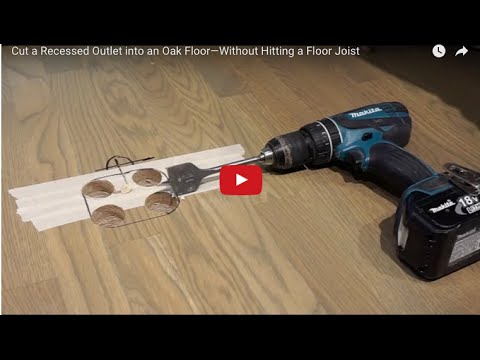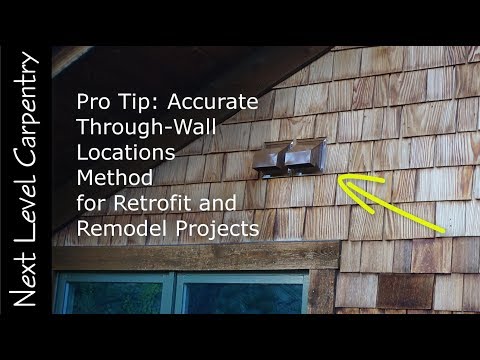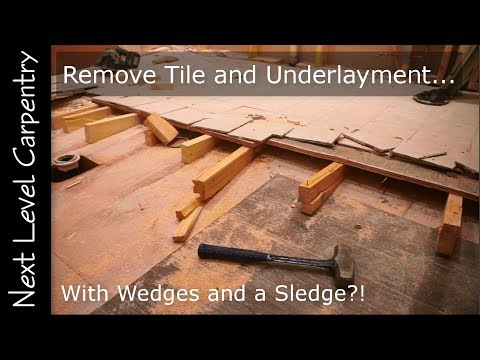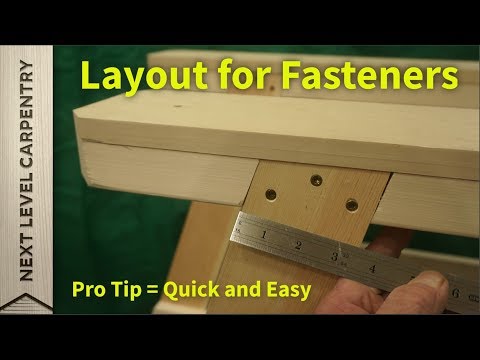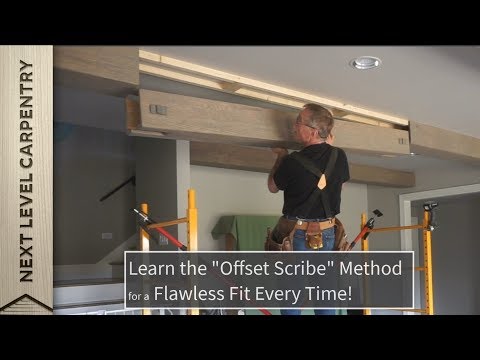How to see through walls and floors to avoid plumbing, HVAC, and loads that aren't obvious in a cabinet-covered wall
Matt showed this tip in an earlier video about cutting floor outlets into a finished floor and getting them in exactly the right spot the first time. It involved a length of piano wire and a cordless drill.
Matt uses 5/64 inch piano wire but says that a straightened coat hanger works fine, too.
He files a wedge point on one end of the wire to help it drill faster. Sharpening an existing tip is much faster than grinding it the first time.
Chuck the wire into the drill and use it to mark a spot for viewing underneath. Th this case, matt slips the wire behind the baseboard at the end of a wing wall he wants to eliminate.
When blind drilling like this, be careful about hitting plumbing or electrical work that may be hidden below. Matt expects resistance from the finished oak floor (3/4-inch) and then from the subfloor (3/4-inch). After that, the bit ought to slip down unimpeded. If he feels any resistance at all, he stops.
Next, he climbs down into the crawlspace to look for the wire. This is much faster and more accurate than pulling a tape measure from the wall to the crawlspace hatch and then from the crawlspace hatch through the crawlspace to where the wall might be.
Matt learns that there is a plumbing vent located in the wall and gets assurances from his favorite plumber that it will be a routine task to move the vent.
Removing the wire is like removing any bit. Chuck it in the drill, hit reverse, and pull it out.
In about five minutes of work, Matt can confidently give the client an accurate assessment of the hidden conditions.
This bit also cuts through many other surfaces:
- Tile grout
- Underlayment
- Carpet on floors
- Drywall
- wall sheathing
- Siding
When he needs to go through tougher material than wood, he uses a shorter length of wire. He carries three lengths in his toolbox, 8-inches, 12-inches, and 240-inches.
The extra-long wire is especially useful for attics because it can get through a deep layer of blown-in insulation.
— Matt Jackson is a Master Carpenter in Rapid City, South Dakota. He runs Next Level Carpentry, a YouTube channel that will help you take your carpentry work to the next level.
